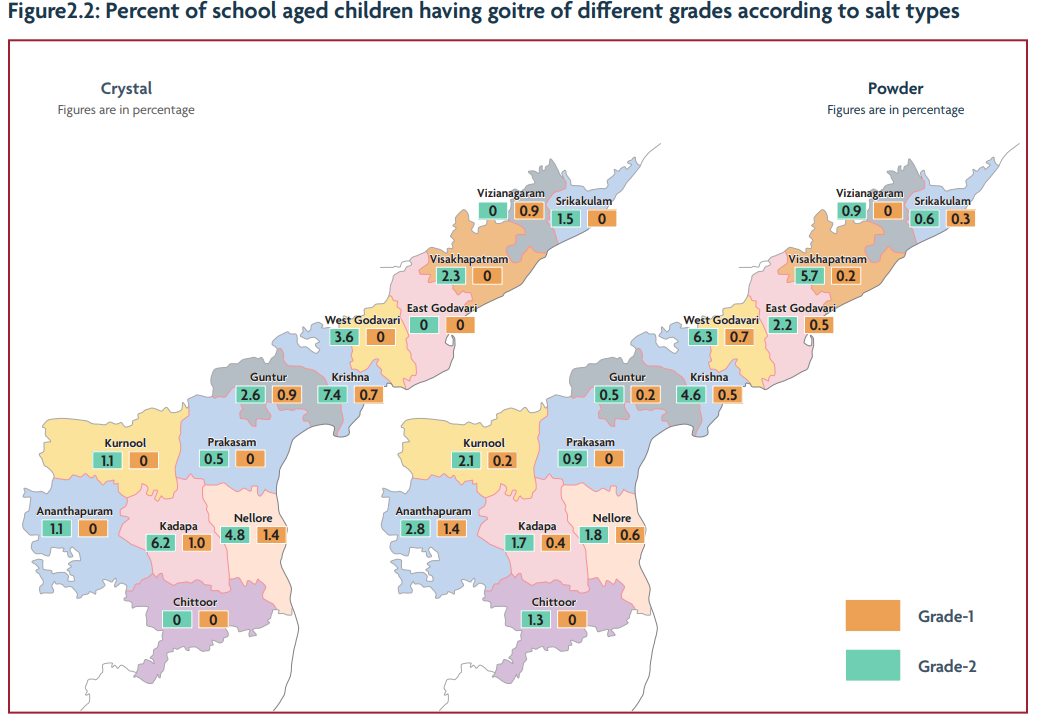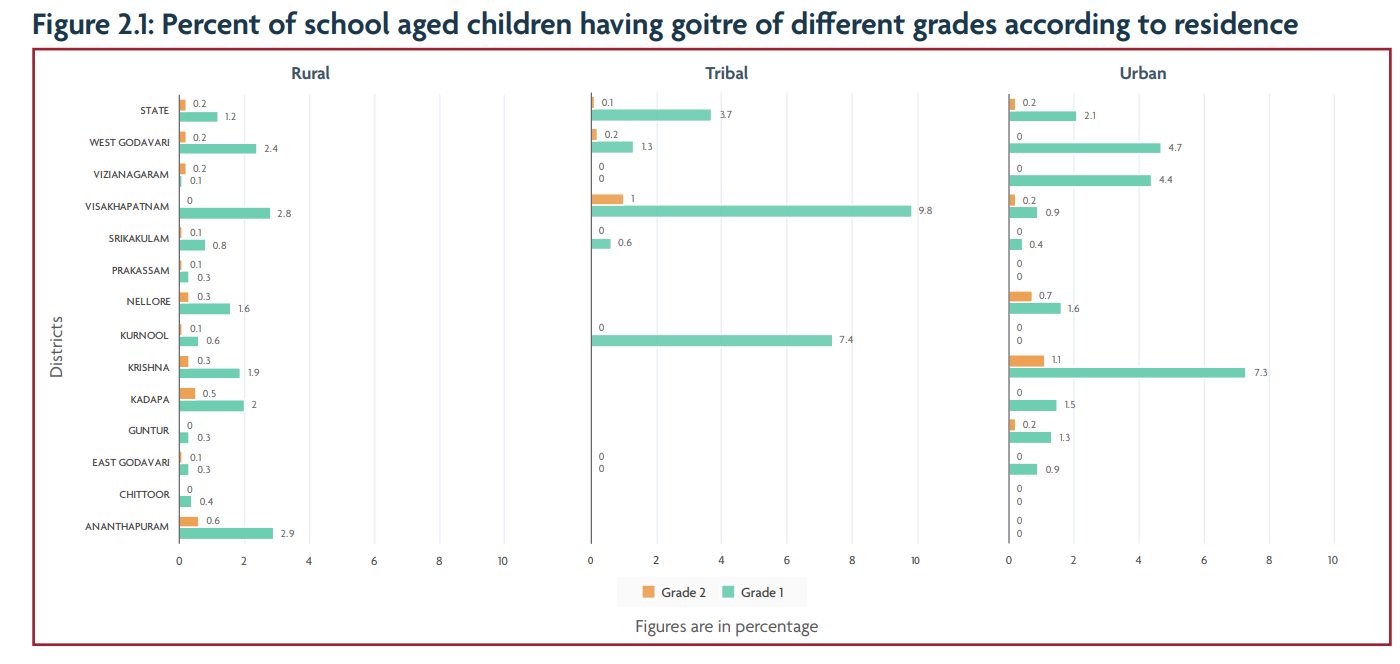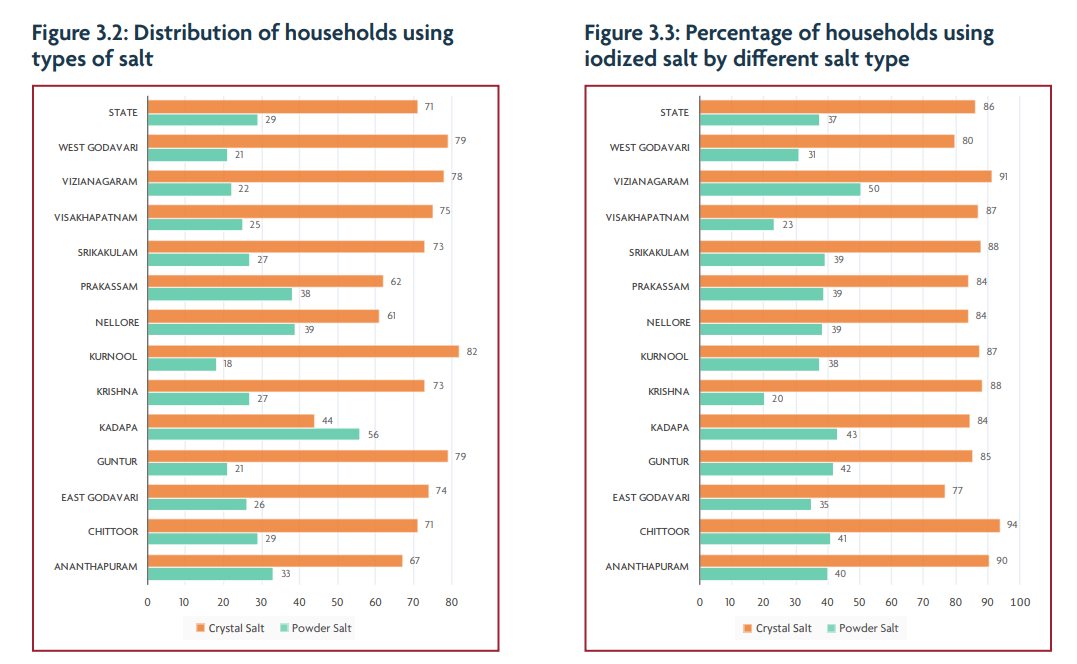More than 70% surveyed rural household in Andhra consume iodised salt: Survey
A survey to assess the iodine nutrition status in Andhra Pradesh has found that 71.9 per cent households in the southern state are consuming iodised salt. However, consumption of traditional crystal salt is exposing the rural and tribal people to iodine deficiency as the disease prevalence is higher in such populations.


Iodised salt is the primary source of Iodine in the daily diet. Photo: freepic.com
A survey conducted by the health department of Andhra Pradesh, along with the global nutrition organisation Nutrition International, has found that the iodine nutrition status of the school children in the age group of 6-12 years, taken as proxy for the population, to be ‘adequate’ as 71.9 per cent of the households were consuming common salt adequately iodised. Iodised salt is commonly known as uppu in the south Indian state.
The percentages of households consuming iodised salt in rural, urban and tribal areas were 72.1 per cent, 73.8 per cent and 64.4 per cent, respectively.
Iodised salt is the primary source of Iodine in the daily diet. According to the World Health Organization (WHO), iodine-deficiency disorders, which can start before birth, jeopardise children’s mental health. For instance, the deficiency reduces intellectual capacity at home, in school and at work. Serious iodine deficiency during pregnancy can result in stillbirth, spontaneous abortion.
The recent survey, titled ‘Andhra Pradesh District Level Iodine Deficiency Disorders Survey’, was conducted to assess the iodine nutrition status of the population across all 13 districts of the southern state in 2020-21.
The latest finding of 71.9 per cent households consuming iodised salt is an improvement from 63.9 per cent reported earlier in 2018-19. Some of the districts such as Vizianagaram, Kurnool and Chittoor have reported high coverage of 82.4 per cent, 78.5 per cent and 78.1 per cent, respectively.

Also Read: Andhra Pradesh chief minister YS Jagmohan Reddy launches doorstep ration delivery system
Need to replace crystal salt?
In order to address Iodine Deficiency Disorders, such as goitre, suboptimal mental development, poor cognitive function, the Indian government had launched the National Goitre Control Programme in 1962 to replace ordinary salt with iodised salt. In 2005, universal salt iodisation was made mandatory in the country.
The recently released National Family Health Survey (NFHS)-5 data shows 83.1 per cent of households in Andhra Pradesh are using iodised salt. This, as per the NFHS, is the lowest in the country. After Andhra Pradesh, Dadra & Nagar Haveli and Daman & Diu is the second worst state in terms of iodised salt consumption, at 89.1 per cent. The data shows Andaman & Nicobar Islands has the highest percentage of households consuming iodised salts in the country at 99.7 per cent. It is followed by Tripura (99.5 per cent), Kerala (99.3 per cent), Manipur (99.3 per cent).
“Of late, there has been increased consumer preference for “traditional salt” under the impression that it contains multiple micronutrients and trace minerals and is beneficial for people with high blood pressure and other heart ailments. Consuming such “traditional salt” would expose them to Iodine Deficiency,” read the press statement issued on January 12 by the Nutrition International, an international not for profit agency based in Canada that works to eliminate vitamin and mineral deficiencies in developing countries.

In Andhra Pradesh, the prevalence of goitre, a disease caused by lack of iodine in the salt, is reported to be 3.1 per cent amongst the population consuming crystal salt, which is far higher than the state average of 1.8 per cent, as per the recent survey. At 8.1 per cent, goitre prevalence is highest in Krishna district. It is followed by Kadapa and Nellore districts at 7.2 per cent and 6.2 per cent, respectively. Goitre is characterised by a swelling in the neck resulting from an enlarged thyroid gland.
Kadapa district reported the lowest percentage of households consuming iodised salt at 63 per cent. The district also reported the highest percentage of households consuming crystal salt, which is poorly iodised at only 37 per cent. Under Universal Salt Iodization, household availability of adequately iodized salt should be at least 90 per cent.

“One of the areas that need extensive efforts is iodization of locally produced salt consumed in the form of crystal salt. Only 37 per cent of such crystal salt is adequately iodized and is traditionally being consumed by rural and tribal populations,” read the statement.
What can be done?
Recommendations to improve and sustain the iodine status of the population:
1) Achieve and sustain Universal Salt Iodisation (USI).
2) Implement effective regulatory monitoring to ensure retail of adequately iodised salt.
3) Encourage production and consumption of adequately iodised salt.
4) Conduct periodic surveys to assess the iodine status of the population.

